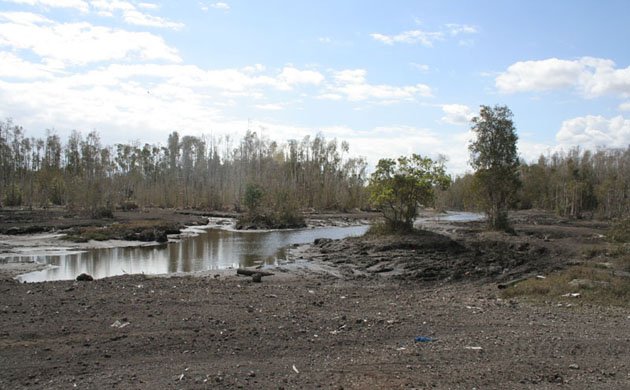
The invasive Burmese Python (Python molurus) is well established in the Florida Everglade. Another species of Python, the African Python (Python sebae) has established a small population in the 2,877-acre Bird Drive Area (BDA) in South Florida. The BDA is adjacent to the Everglades National Park and it is bordered by highways and urban areas. The African Python has a reputation of being more aggressive than its Burmese counterpart. State and Federal Agencies feared that if these two large constrictor snakes are allowed to breed they would produce a hybrid super-python.
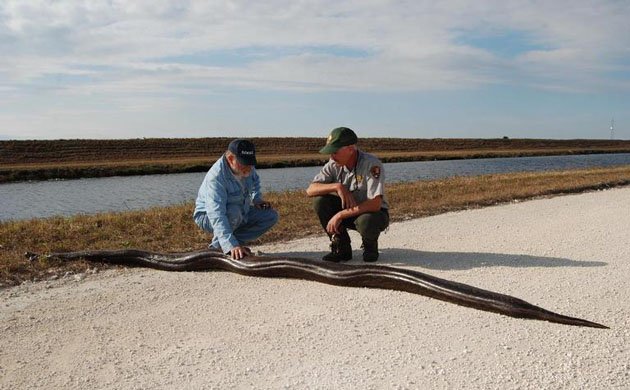
Photo Credit: Invasive and Exotic Species of North America (www.invasive.org)
Burmese pythons either escaped from pet trade breeding facilities in South Florida after Hurricane Andrew or were released by people who no longer wanted them as pets. It is clear though that Burmese Pythons in South Florida come from a founder or source population as studies showed that DNA samples from snakes caught in the Everglades show they are related to some degree. It is likely that the population of African Pythons was started the same way as the Bird Drive Area is bordered by major highways and is adjacent to urban areas.
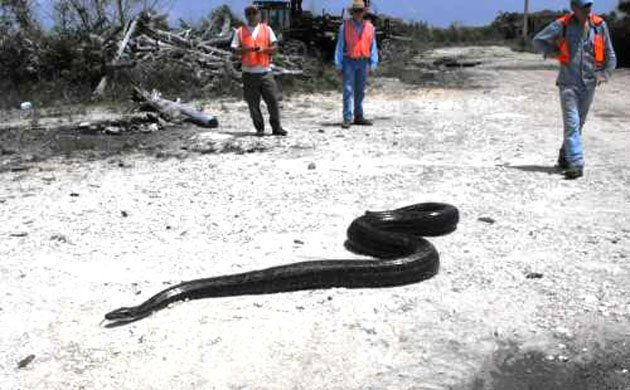
Photo Credit: US Geological Survey
The impact that pythons are having on native wildlife is not well understood. It is obvious that pythons are eating native wildlife as its population continues to grow. The analysis of Python stomach contents indicates that they eat mammals, as small as mice, and as large as a fully grown deer. Pythons have been observed swallowing birds and mammals, and coiled up resting in trees where wading birds were actively nesting. Raccons and other medium-sized mammals have declined in the Everglades, but other than a cause effect association, it is difficult to proof that Pythons caused such decline.
African Pythons in the Bird Drive Area were just beginning to establish themselves as a population. Given the possibility for expansion onto the Florida Everglades and potential hybridization with the Burmese Python, local and State stakeholders organized search and capture campaigns. Conditions at the Bird Drive Area allowed for a relatively easy access and the possibility to search for African Pythons. The best approach was conducting searches throughout the 2,877 acres focusing on the edges of bodies of water as it is the Pythons primary habitat. Pythons have become skittish and take to the water upon noticing the presence of humans. The best chance to catch a Python is during a cold front. Occasional cold fronts during mid January and mid February forces the Pythons to get out of the swamps and water and seek the morning sun to warm their bodies up. Searchers then have to act quickly as snakes, even in their lethargic state, will try to take to the water to escape.
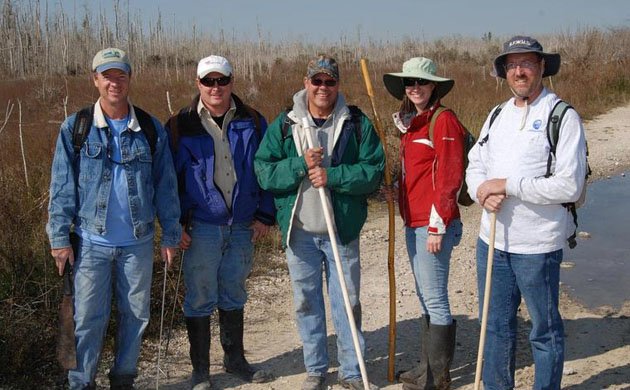
Volunteers. Photo Credit: Nestor Iglesias
Three to Four-day long searches since the year 2010 has proven effective to contain and eradicate the population of African Pythons. Python round ups were organized around forecasted cold fronts and counted on state and federal biologists, and many volunteers. I volunteered to help with the first python round up in 2010 when the first large African Pythons were captured. Some of these snakes had evidence of birds in their stomachs and some were gravid with up 55 eggs nearly ready to be laid.
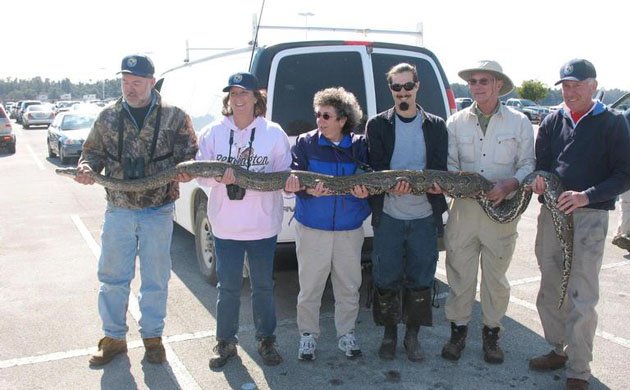
Rock Python. Photo Credits: Samuel Wright
The population of African Pythons in the Bird Drive Area appears to have been contained. The 2015 annual African python round up, which is taking place as I write this post, has found no evidence of African Python; this includes no individual nor shed skin observed. Only two Burmese Pythons have been taken this year. These Burmese Pythons are likely part of the population in the Everglades National Park.
There are still about 150,000 snakes in the vast and impenetrable expanses of the Everglades. All methods used to capture pythons have had little success. The battle to at least control their numbers and expansion onto other areas will continue for years to come.
Featured Image: Bird Basin Area in South South Florida













I’m glad that invasion was caught early. Invasive species can be a devil to deal with, as Kiwis know well enough.
yuck! They are very cool looking creatures but definitely don’t belong in the Everglades! There are already issues with climate change!
Yes Dunca, as with other invasive species in Florida, acting early and agresively can be difference between stopping them from establishing a population or learning to live with them when things get out of hand. What are the major invasive species issues in NZ?
Indeed Chris, South Florida and the Everglades are so flat and barely above sea level that the effects of rising sea levels are beginning to be noticed. The next decade will be one of changes here.
New Zealand is plagued by invasive species brouhgt by British settlers, many of the commonest birds are European and all of the wild land mammals, other than bats, are introduced. The same story appears in other groups too with many invasive plants, insects and other organisms.